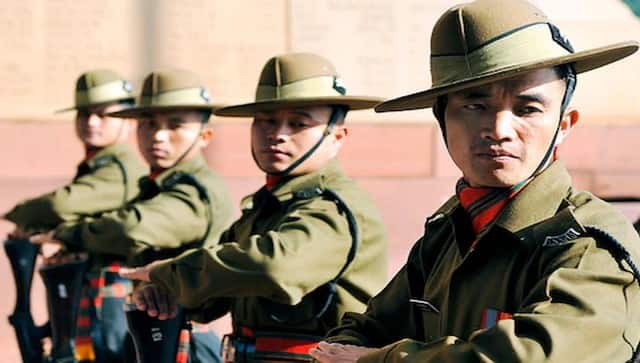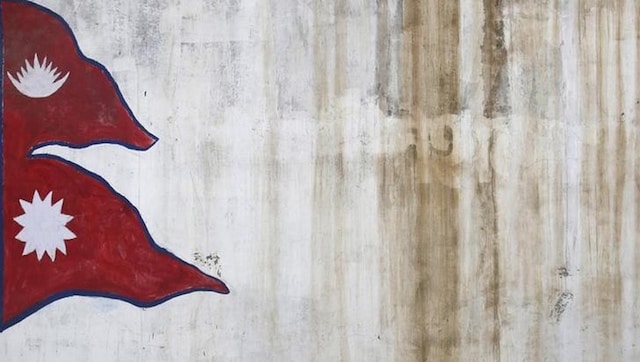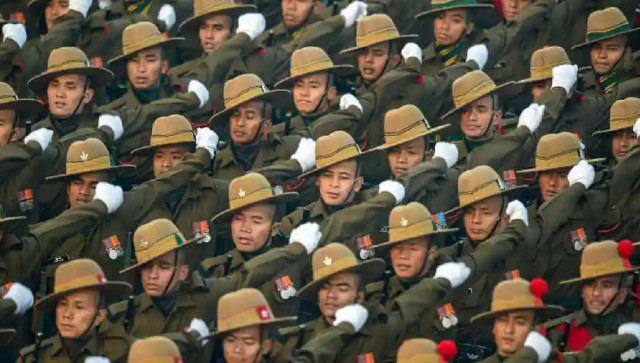Even as India prepares to unroll its controversial Agnipath scheme, there comes news of a new development – that Nepali Gorkhas will be recruited under this scheme. Announced on 14 June, the scheme initially provided for the recruitment of youths in the age bracket of 17-and-half to 21 years for only four years with a provision to retain 25 per cent of them for 15 more years. However, the Centre extended the upper age limit to 23 years for recruitment in 2022. The personnel recruited under the new scheme would be known as Agniveers. Let’s take a look at the latest development, how Gorkhas are recruited in the Indian Army and why the development seems to have caused some consternation in some quarters: What’s the latest development? The Print reported that recruitment of Nepalis into the Indian Army’s seven Gorkha regiments will be done through the Agnipath scheme. Sources in the defence and security establishment told The Print Gorkhas were keen on the recruitment as per their feedback. Nepali Gorkhas would be recruited for a four-year term after which 25 per cent would be retained for a longer term – conditions similar to that of Indian soldiers under the scheme. The Indian Army and Gorkhas The Indian Army takes in Nepalese soldiers under the tripartite treaty signed between Nepal, India and Britain at time of Independence. India currently has 43 Gorkha battalions with soldiers from both Nepal and India in seven Gorkha regiments – 1st, 3rd, 4th, 5th, 8th, 9th and the 11th. Maj Gen Ashok K Mehta (retd) wrote in the Tribune that “Gorkhas still join Indian regiments for traditional ancestral bonding with the parent battalions.” The 1, 3, 4, 5 and 8 Gorkha regiments are mainly Magars and Gurungs; the 9th are Chhetris and Thakuris; and 11 Gorkhas consist of Rais and Limbus and are all part of the Indian Army, he noted. [caption id=“attachment_11016591” align=“alignnone” width=“640”]
 Representational image. News18[/caption] The late CDS, Gen Bipin Rawat, commanded the 5th Battalion of 11 Gorkha Rifles, he added. Mehta wrote that recruitment into Gorkha regiments was initially done at Nautanwa, along the India-Nepal border near Bhairhawa. Later permanent locations such as the Gorkha Recruiting Depots in Kunraghat, Gorakhpur and Ghoom, near Darjeeling were selected. Recruiters from Nepal, called Galla Wallahs, used to bring young Gorkhas to the recruitment depots, trekking 20 to 24 days for bharti in Bharatiya fauj, Mehta wrote.
Representational image. News18[/caption] The late CDS, Gen Bipin Rawat, commanded the 5th Battalion of 11 Gorkha Rifles, he added. Mehta wrote that recruitment into Gorkha regiments was initially done at Nautanwa, along the India-Nepal border near Bhairhawa. Later permanent locations such as the Gorkha Recruiting Depots in Kunraghat, Gorakhpur and Ghoom, near Darjeeling were selected. Recruiters from Nepal, called Galla Wallahs, used to bring young Gorkhas to the recruitment depots, trekking 20 to 24 days for bharti in Bharatiya fauj, Mehta wrote.
After physical and medical tests, the few chosen were sent to the regimental training centres.
The system changed when Indian recruiting teams went to Nepal to pluck hardy youth from inaccessible areas, he added. Recruitment rallies were held in Pokhara, Dharan and other places in west and east Nepal, he wrote. Sources said Nepalis constitute a fixed 60 percent while Indians make up the rest, as per The Print. Around 32,000-35,000 Nepal soldiers are serving in the Indian Army at any given time. The Indian Army ex-servicemen community in Nepal is about 1.32 lakh-strong, as per The Indian Express. How will Nepali Gorkhas be recruited? As per The Print, the recruitment would occur via two Gorkha Recruitment Depots (GRDs) – in West Bengal’s Darjeeling and Uttar Pradesh’s Gorakhpur.
Sources said the armies of India, Nepal and the UK first decide on a date for the recruitment rally.
On that day, representatives from all three armies will hold a written and physical test at a chosen location in Nepal. “Let us say, 100 candidates have turned up at the rally and the British want 20, India 40 and the Nepal Army 50. The top 20 recruits are given the choice of joining the British Army, which offers the highest pay and allowances. The next lot is taken by India, which gives 2.5 times the pay and allowance of the Nepal Army,” a source told The Print. The dates for recruitment have not yet been fixed as talks between the Indian, Nepalese and British armies to fix dates for recruitment are ongoing, as per The Print. Indian Gorkhas are recruited from Uttarakhand, Himachal Pradesh, Darjeeling, Assam and Meghalaya through the Army Recruitment Office (ARO) in these states. Move raises concerns in some quarters The impact of such a move has raised concern in some quarters in both India and Nepal. [caption id=“attachment_8467981” align=“alignnone” width=“640”]
 Representational image. Reuters[/caption] Nepali website MyRepublica said government officials maintain that any such provision violates the 1947 Tripartite Agreement that governs the recruitment of Nepali youths into the Indian Gorkhas and any change in the recruitment procedures must first be approved by the Nepal government. The Tripartite Agreement mentions that “subject to satisfactory performance and conduct, all soldiers should be allowed to serve for sufficient time in order to qualify for a pension”, officials further told the newspaper. Senior government officials told the newspaper that though Indian media reported that Gorkhas will be recruited under this scheme “even the minimum courtesy required to inform Kathmandu authorities does not seem to have been observed.” Commentator Kanak Mani Dixit told the newspaper that the Agnipath scheme will impact both Nepali society and Nepal’s foreign relations. “In terms of Nepali society, the Gorkha recruitment is a legacy of Nepal’s particular history, and has provided gainful employment and income to a large portion of the hill ethnic communities. It has been the hope that foreign recruitment will end as Nepal enters an era of prosperity, when citizens do not find it necessary to enter the military of another country. The Agnipath formula, however, would deprive Nepali citizens from a full career in the Indian Gorkha regiments. This is not the kind of employment conditions in mind when Nepal formally allows foreign recruitment, and so the Indian Government would be seen to be in breach of the Tripartite Agreement,” Dixit warned. As per Indian Express, serving soldiers also send remittances home to the tune of Rs 1,000 crore every year. “That is a huge injection of money into Nepal’s economy,” Ranjit Rae, India’s former ambassador to Nepal, who has written extensively about India’s Gorkha connect with Nepal in his book ‘Kathmandu Dilemma: Resetting India-Nepal Ties’ told Indian Express. “There is massive unemployment in Nepal, and most young people leave to work in other countries. In the villages, only the old folks and women are left. It would be very difficult to assess the impact [of the new recruitment scheme] immediately. But as we saw in India, the first reaction in Nepal, too, was dismay.” Major-General Gopal Gurung (retd) of 5 Gorkha told Indian Express salaries, pensions and other benefits are a huge draw in Nepal for recruitment into the Indian Army. He added that the socioeconomic impact of Agnipath may take 10 or 15 years to become apparent, but that the historic Gorkha connection was at stake. “You had a system where you could join, not just for money but also because it is a family tradition,” Gurung, a third-generation soldier of the Indian Army and an alumnus of the National Defence Academy told the newspaper. His grandfather was a JCO, his father a captain, he said. Gurung cited Prime Minister Narendra Modi’s 2014 speech as an example: “He could have invoked any other aspect of India-Nepal ties — culture, religion, Buddhism, Hinduism — but he chose to invoke the Gorkha connection. That is the special relationship between India and the Gorkhas,” he said. Maj Gen Ashok K Mehta (retd), writing in The Tribune, warned, “Agnipath is seen as a big disappointment as in four years, the youth could earn a fortune in Dubai, Dublin and Durban, as they do, without putting their lives on the block along the LAC and LoC.” “Over time, the BJP government is likely to end the Gorkha legend. Prime Minister Modi seems to have forgotten that on his first visit to Nepal in 2014, he had highlighted the sacrifices of the Gorkha soldiers. Agnipath will weaken that Gorkha bonding.” With inputs from agencies Read all the
Latest News
,
Trending News
,
Cricket News
,
Bollywood News
, India News
and
Entertainment News
here. Follow us on
Facebook
,
Twitter
and
Instagram
.
Representational image. Reuters[/caption] Nepali website MyRepublica said government officials maintain that any such provision violates the 1947 Tripartite Agreement that governs the recruitment of Nepali youths into the Indian Gorkhas and any change in the recruitment procedures must first be approved by the Nepal government. The Tripartite Agreement mentions that “subject to satisfactory performance and conduct, all soldiers should be allowed to serve for sufficient time in order to qualify for a pension”, officials further told the newspaper. Senior government officials told the newspaper that though Indian media reported that Gorkhas will be recruited under this scheme “even the minimum courtesy required to inform Kathmandu authorities does not seem to have been observed.” Commentator Kanak Mani Dixit told the newspaper that the Agnipath scheme will impact both Nepali society and Nepal’s foreign relations. “In terms of Nepali society, the Gorkha recruitment is a legacy of Nepal’s particular history, and has provided gainful employment and income to a large portion of the hill ethnic communities. It has been the hope that foreign recruitment will end as Nepal enters an era of prosperity, when citizens do not find it necessary to enter the military of another country. The Agnipath formula, however, would deprive Nepali citizens from a full career in the Indian Gorkha regiments. This is not the kind of employment conditions in mind when Nepal formally allows foreign recruitment, and so the Indian Government would be seen to be in breach of the Tripartite Agreement,” Dixit warned. As per Indian Express, serving soldiers also send remittances home to the tune of Rs 1,000 crore every year. “That is a huge injection of money into Nepal’s economy,” Ranjit Rae, India’s former ambassador to Nepal, who has written extensively about India’s Gorkha connect with Nepal in his book ‘Kathmandu Dilemma: Resetting India-Nepal Ties’ told Indian Express. “There is massive unemployment in Nepal, and most young people leave to work in other countries. In the villages, only the old folks and women are left. It would be very difficult to assess the impact [of the new recruitment scheme] immediately. But as we saw in India, the first reaction in Nepal, too, was dismay.” Major-General Gopal Gurung (retd) of 5 Gorkha told Indian Express salaries, pensions and other benefits are a huge draw in Nepal for recruitment into the Indian Army. He added that the socioeconomic impact of Agnipath may take 10 or 15 years to become apparent, but that the historic Gorkha connection was at stake. “You had a system where you could join, not just for money but also because it is a family tradition,” Gurung, a third-generation soldier of the Indian Army and an alumnus of the National Defence Academy told the newspaper. His grandfather was a JCO, his father a captain, he said. Gurung cited Prime Minister Narendra Modi’s 2014 speech as an example: “He could have invoked any other aspect of India-Nepal ties — culture, religion, Buddhism, Hinduism — but he chose to invoke the Gorkha connection. That is the special relationship between India and the Gorkhas,” he said. Maj Gen Ashok K Mehta (retd), writing in The Tribune, warned, “Agnipath is seen as a big disappointment as in four years, the youth could earn a fortune in Dubai, Dublin and Durban, as they do, without putting their lives on the block along the LAC and LoC.” “Over time, the BJP government is likely to end the Gorkha legend. Prime Minister Modi seems to have forgotten that on his first visit to Nepal in 2014, he had highlighted the sacrifices of the Gorkha soldiers. Agnipath will weaken that Gorkha bonding.” With inputs from agencies Read all the
Latest News
,
Trending News
,
Cricket News
,
Bollywood News
, India News
and
Entertainment News
here. Follow us on
Facebook
,
Twitter
and
Instagram
.
)